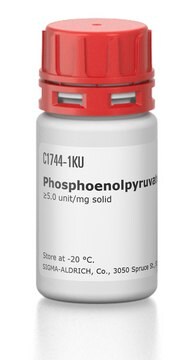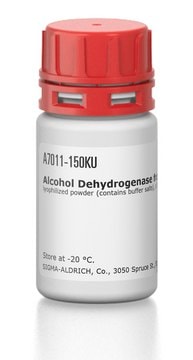P7173
Pyruvate Carboxylase from bovine liver
buffered aqueous glycerol solution, 5-25 units/mg protein (BCA)
Synonym(s):
Pyruvate:CO2 ligase (ADP-forming)
About This Item
Recommended Products
form
buffered aqueous glycerol solution
specific activity
5-25 units/mg protein (BCA)
concentration
≥0.5 mg/mL
foreign activity
lactic dehydrogenase ≤0.5%
storage temp.
−20°C
Looking for similar products? Visit Product Comparison Guide
Application
Biochem/physiol Actions
Unit Definition
Physical form
Preparation Note
Storage Class Code
10 - Combustible liquids
WGK
WGK 1
Flash Point(F)
Not applicable
Flash Point(C)
Not applicable
Certificates of Analysis (COA)
Search for Certificates of Analysis (COA) by entering the products Lot/Batch Number. Lot and Batch Numbers can be found on a product’s label following the words ‘Lot’ or ‘Batch’.
Already Own This Product?
Find documentation for the products that you have recently purchased in the Document Library.
Articles
Glucose metabolism is regulated by the opposing actions of insulin and glucagon. Insulin is released from pancreatic ß cells in response to high blood glucose levels and regulates glucose metabolism through its actions on muscle, liver, and adipose tissue.
Our team of scientists has experience in all areas of research including Life Science, Material Science, Chemical Synthesis, Chromatography, Analytical and many others.
Contact Technical Service








